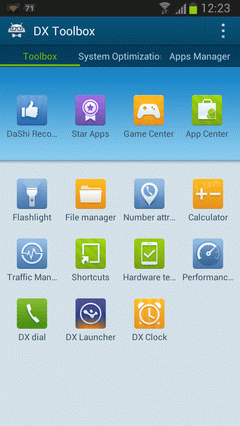

- #Dx toolbox android how to#
- #Dx toolbox android install#
- #Dx toolbox android archive#
If toolbox items are still missing after you perform these steps, you can delete the %LocalAppData%\Microsoft\VisualStudio\ _ folder to fully reset your Visual Studio settings. Run Visual Studio again and wait until it recreates all items in the Toolbox.Unload the Visual Studio isolated hive.Remove everything from these keys leaving them empty.Find the “IsolatedHive\Software\Microsoft\VisualStudio\_\ToolboxControlsInstaller_AssemblyFoldersExCache” and “IsolatedHive\Software\Microsoft\VisualStudio\_\ToolboxControlsInstallerCache” keys.
Load the Visual Studio’s private registry as described in the How to examine Visual Studio 2017 registry article in Microsoft documentation.To do this, click the “Run” item in the Start menu and type “regedit” without quotation marks. Open the “%LocalAppData%\Microsoft\VisualStudio* * _ “ folder and remove all the.After the reset procedure is done, follow these steps: Reset the Toolbox from Visual Studio: right-click the Toolbox and click “Reset Toolbox”.

Usually, these issues appear in Silverlight projects.
If the application closes unexpectedly or crashes with an error, please collect all files from the %LocalAppData%\DX Toolbox Analyzer folder, create a new ticket regarding this problem, and attach logs to your message.Ĭompletely Reset the Toolbox and Enable Visual Studio to Rebuild it From ScratchĪfter you install or update DevExpress products, you may experience issues with Toolbox items.
Click the “Test Toolbox and attempt to repair it” button.įollow the instructions provided by the application. Download the ToolboxAnalyzer archive and extract it to your local drive. If the tool has not resolved the issue, we need to research your machine configuration to determine the cause of the issue. You can run the tool from the DevExpress toolbar menu or the Toolbox context menu: Run this tool to reinitialize the Visual Studio Toolbox. Starting with v13.1, the Repair ToolBox tool is installed with DevExpress controls and a link to it is available in Visual Studio. The target framework version is displayed on the Application tab. To check the target framework in your project, navigate to the project properties. For information on supported target frameworks, refer to the following page: Shipping Versions & Supported Technologies. If you installed Visual Studio after DevExpress products, re-run DevExpress installer in Repair mode to register DevExpress toolbox items for that Visual Studio.Įnsure that you set the correct target framework for your project. For this, run the DevExpress installer in Modify mode and check whether WinForms controls are selected: For example, if you develop a WinForms project, ensure that DevExpress WinForms controls are installed. Make sure that you installed the required product on your machine. The Toolbox duplicates items for Devexpress products. Visual Studio loads the Toolbox for a long time. The Toolbox does not display items for DevExpress products. This section explains how to resolve any of the following issues with Toolbox items: Resolve Issues with Toolbox Items (.NET Framework) Go to Tools | NuGet Package Manager | Manage NuGet Packages for Solution and add the NuGet packages that contain the required controls to make these controls available in the Visual Studio Toolbox. If you add the DevExpress products and use a NuGet feed instead of the Unified Component Installer, the toolbox does not contain DevExpress controls until you add the corresponding NuGet packages. Make WinForms and WPF Controls Available in Toolbox (.NET 5+) This article explains how to resolve any issues with the Visual Studio Toolbox. NET Framework (WinForms, ASP.NET WebForms, WPF controls, XAF components) are available in the Visual Studio Toolbox. Hp dmi tool.DevExpress installer integrates DevExpress products into your Visual Studio instance.






 0 kommentar(er)
0 kommentar(er)
